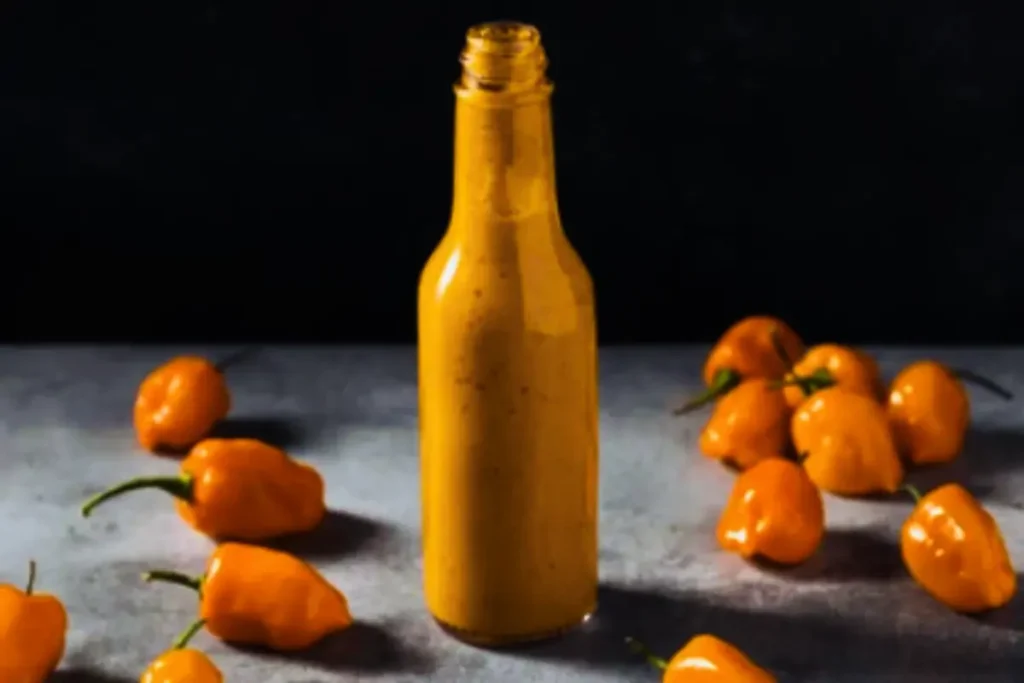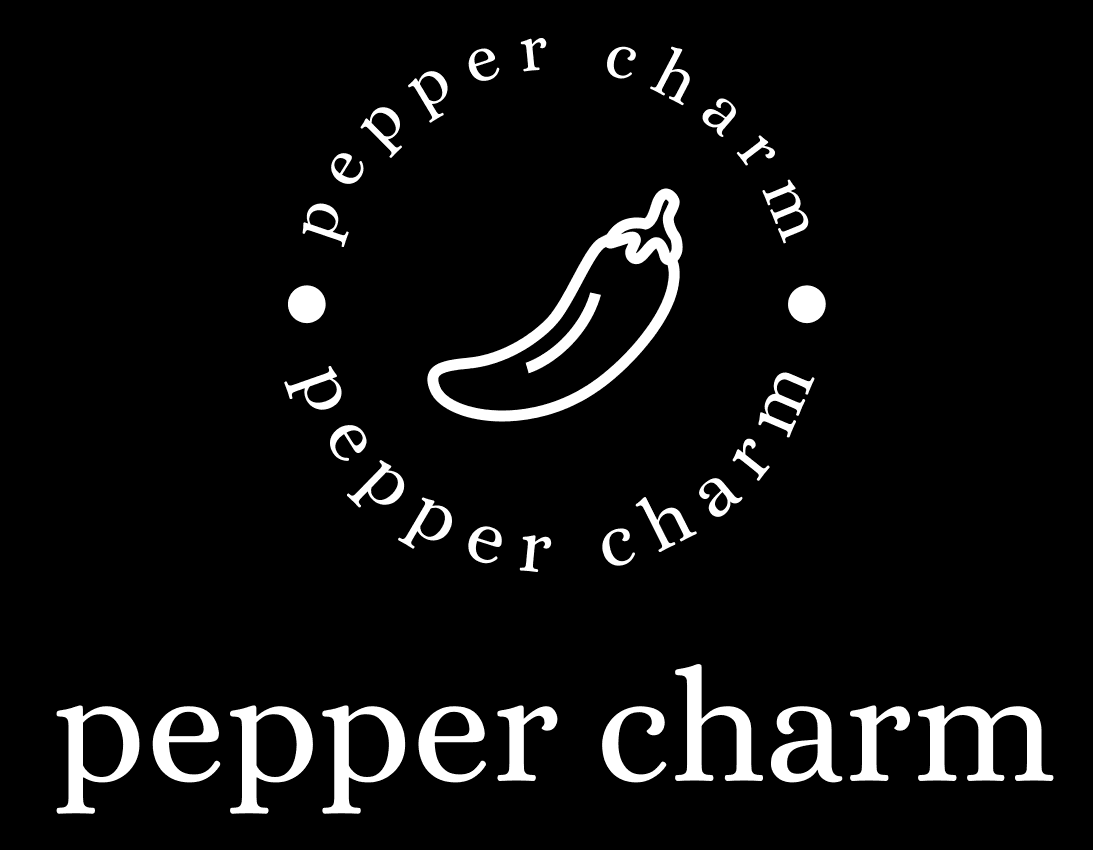Tabasco Pepper Sauce
Introduction to Tabasco Pepper Sauce
Tabasco Pepper Sauce is a legendary condiment that has become a household name for those who appreciate the perfect blend of heat and flavor. Made from the fiery Tabasco peppers, this sauce is a must-have for anyone looking to spice up their meals. While Tabasco Pepper Sauce is unique in its taste, it shares similarities with other hot sauces made from peppers like Scotch Bonnet Pepper, Carolina Reaper, and Habanero Pepper. These peppers are often used as substitutes in recipes when Tabasco Pepper Sauce isn’t available, each bringing its own level of heat and distinct flavor profile. Whether you’re a fan of the intense heat of the Carolina Reaper, the fruity warmth of the Scotch Bonnet Pepper, or the balanced spice of the Habanero Pepper, Tabasco Pepper Sauce remains an iconic choice for elevating your culinary creations.

Overview of its History
Tabasco Pepper Sauce has a rich history dating back to the mid-19th century. It was first created by Edmund McIlhenny, who cultivated the fiery Tabasco peppers on Avery Island, Louisiana. McIlhenny’s original recipe, which combined mashed Tabasco peppers, salt, and vinegar, remains largely unchanged to this day. The sauce quickly gained popularity, becoming a must-have condiment for those who enjoy adding a spicy kick to their food. Today, Tabasco Pepper Sauce is sold in over 195 countries, with its distinct red bottle and green cap recognized by millions.
Tabasco Pepper Sauce Scoville
Tabasco Pepper Sauce typically measures between 2,500 to 5,000 Scoville Heat Units (SHU) on the Scoville scale, which ranks the spiciness of chili peppers and their sauces. This level of heat is considered moderate, offering a noticeable kick without being overwhelming. It’s milder than some of the hotter sauces like those made from habanero or ghost peppers, but spicier than mild sauces like Sriracha
Tabasco pepper sauce ingredients:
Tabasco Peppers: These are the primary ingredients, providing the sauce’s signature heat and flavor.
Vinegar: Distilled vinegar is used to preserve the sauce and gives it a tangy, sharp taste.
Salt: Adds flavor and acts as a preservative.
Water: Sometimes used to adjust the consistency of the sauce.
Garlic (in some variations): Certain types of Tabasco sauces, like the Garlic Pepper Sauce, include garlic for added flavor.
Sugar (in some variations): Used in certain blends to balance the heat with a touch of sweetness.
Spices (in some variations): Additional spices may be included in specific Tabasco sauce varieties for unique flavor profiles.
The Production Process of Tabasco Pepper Sauce
The production of Tabasco Pepper Sauce is a meticulous process that has been refined for over a century. It begins with the careful cultivation of Tabasco peppers on Avery Island and other locations worldwide. Once harvested, the peppers are mashed and combined with Avery Island salt. The pepper mash is then aged for up to three years in white oak barrels, allowing the flavors to develop and intensify. After aging, the mash is blended with high-quality vinegar, strained, and bottled as Tabasco Pepper Sauce. The aging process is key to the sauce’s depth of flavor, balancing the heat of the peppers with a tangy, savory profile.

Culinary Uses of Tabasco Pepper Sauce
Tabasco Pepper Sauce is incredibly versatile, making it a valuable addition to any kitchen. Its ability to enhance the flavor of dishes without overpowering them has made it a favorite among chefs and home cooks alike.


Enhancing Savory Dishes
- Soups and Stews: A few dashes of Tabasco Pepper Sauce can bring warmth and depth to soups, stews, and chowders. Its tangy flavor cuts through rich, hearty ingredients, adding a layer of complexity to the dish.
- Eggs and Breakfast Foods: Tabasco Pepper Sauce pairs perfectly with eggs, whether they’re scrambled, fried, or poached. It also complements breakfast staples like avocado toast, omelets, and hash browns, giving them a spicy kick.
Elevating Snacks and Appetizers
- Spicy Dips: Mixing Tabasco Pepper Sauce into sour cream, cream cheese, or mayonnaise creates a quick and easy dip with a fiery edge. This can be served with chips, vegetables, or as a spread on sandwiches and wraps.
- Buffalo Wings: Tabasco Pepper Sauce is a key ingredient in traditional Buffalo wing sauce. When combined with melted butter, it creates a spicy, tangy coating that clings to the wings, making them irresistible.
Adding Heat to Main Courses
- Grilled Meats: Whether it’s steak, chicken, or fish, a marinade or glaze made with Tabasco Pepper Sauce can infuse grilled meats with a bold, spicy flavor. The sauce’s vinegar content also helps to tenderize the meat, ensuring a juicy, flavorful result.
- Pasta and Pizza: A few drops of Tabasco Pepper Sauce can transform a simple pasta dish or pizza into a flavorful, spicy masterpiece. Its tangy heat complements tomato-based sauces and melted cheese, enhancing the overall taste

Creative Uses
- Cocktails: Tabasco Pepper Sauce isn’t just for food—it can also be used in cocktails. The Bloody Mary, a classic brunch cocktail, relies on Tabasco Pepper Sauce for its signature spicy kick. A dash of the sauce can also be added to Micheladas, spicy margaritas, or even a simple beer for a fiery twist.
- Desserts: Though unconventional, Tabasco Pepper Sauce can be used in small amounts to add a spicy note to desserts. For example, a chocolate sauce with a hint of Tabasco can be drizzled over ice cream, or a spicy caramel can be used to top a cheesecake.
Health Benefits of Tabasco Pepper Sauce
While Tabasco Pepper Sauce is best known for its flavor, it also offers several health benefits. The main ingredient, Tabasco peppers, contains capsaicin, a compound responsible for their heat. Capsaicin has been shown to boost metabolism, reduce inflammation, and improve digestion.
Metabolism Boost
- Thermogenic Effect: Capsaicin increases the body’s heat production, which can help burn more calories. This thermogenic effect makes spicy foods like Tabasco Pepper Sauce a popular choice for those looking to enhance their metabolism.
- Appetite Suppression: Some studies suggest that capsaicin can help reduce appetite, making it easier to maintain a healthy diet. Adding Tabasco Pepper Sauce to meals may help you feel fuller faster, reducing the likelihood of overeating.
Anti-Inflammatory Properties
- Reducing Inflammation: Capsaicin has anti-inflammatory properties, which can help alleviate pain and discomfort associated with conditions like arthritis. Regular consumption of Tabasco Pepper Sauce may contribute to reduced inflammation and improved joint health.
- Antioxidants: Tabasco peppers are also rich in antioxidants, which help protect the body’s cells from damage caused by free radicals. These antioxidants support overall health and may reduce the risk of chronic diseases.
How to Store and Preserve Tabasco Pepper Sauce
Tabasco Pepper Sauce is known for its long shelf life, but proper storage can ensure it retains its flavor and potency.
Storage Tips
- Keep It Cool: Store Tabasco Pepper Sauce in a cool, dark place, such as a pantry or cupboard. Exposure to heat and light can degrade the quality of the sauce over time.
- Refrigeration: While it’s not necessary to refrigerate Tabasco Pepper Sauce, doing so can help preserve its freshness, especially after opening. Refrigeration can also extend the sauce’s shelf life, preventing any potential spoilage.
Shelf Life
- Unopened Bottles: Unopened bottles of Tabasco Pepper Sauce can last for several years when stored properly. The high vinegar content acts as a natural preservative, preventing the growth of bacteria.
- Opened Bottles: Once opened, Tabasco Pepper Sauce can be stored for up to five years, although it’s best to consume it within a year for optimal flavor.
Tabasco Pepper Sauce Variants
Over the years, the McIlhenny Company has expanded its product line, offering several variants of the classic Tabasco Pepper Sauce. Each variant provides a unique flavor profile, catering to different tastes and culinary applications.
Tabasco Green Pepper Sauce
- Milder Flavor: Made from jalapeño peppers, Tabasco Green Pepper Sauce offers a milder heat compared to the original red sauce. It has a fresh, tangy flavor that complements lighter dishes like salads, seafood, and poultry.
- Versatile Use: This variant is ideal for those who enjoy a bit of spice without the intensity of the original Tabasco Pepper Sauce. It can be used as a marinade, salad dressing, or simply drizzled-over food.

Tabasco Chipotle Pepper Sauce
- Smoky Heat: Tabasco Chipotle Pepper Sauce is made from smoked red jalapeños, giving it a rich, smoky flavor with a moderate heat level. This sauce is perfect for adding depth to barbecue, grilled meats, and Tex-Mex dishes.
- Popular Choice: The smoky profile of this sauce has made it a favorite among those who enjoy bold, savory flavors. It’s also a great addition to chili, burgers, and roasted vegetables.

Tabasco Habanero Sauce
- Intense Heat: For those who crave even more heat, Tabasco Habanero Sauce offers a fiery experience. Made with a blend of habanero peppers, this sauce is much hotter than the original, delivering a punch of spice that lingers.
- Caribbean Influence: This variant incorporates flavors inspired by Caribbean cuisine, including mango, papaya, and ginger. The combination of heat and sweetness makes it a versatile sauce for spicing up jerk chicken, seafood, and tropical dishes.

Tabasco Pepper Sauce Vs Scotch Bonnet Pepper Sauce
When comparing the two popular hot sauces, the differences between a sauce made from Tabasco peppers and one made from Scotch Bonnet peppers are quite notable. Both sauces offer a distinct heat and flavor, but they cater to different palates and culinary applications. The sauce derived from Tabasco peppers is known for its vinegary tang and moderate heat, making it a versatile option for adding a sharp, spicy kick to a variety of dishes. On the other hand, Scotch Bonnet pepper sauce is celebrated for its fruity, tropical sweetness combined with a much more intense heat. This unique flavor profile makes it a favorite in Caribbean cuisine, where it enhances the richness of dishes without overwhelming them.
| Attributes | Tabasco Pepper Sauce | Scotch Bonnet Pepper Sauce |
|---|---|---|
| Scoville (SHU) | 2,500 to 5,000 | 100,000 to 350,000 SHU |
| Heat Level | Moderate heat | Higher heat, more intense |
| Flavor Profile | Tangy, vinegar-forward flavor | Fruity, slightly sweet with tropical undertones |
| Culinary Uses | Versatile, commonly used in a variety of international cuisines | Predominantly used in Caribbean dishes, adding a distinct flavor |
| Color | Bright red with a slightly thinner consistency | Often has a vibrant orange or yellow hue with a thicker consistency |
The Legacy of Tabasco Pepper Sauce
Tabasco Pepper Sauce is more than just a condiment; it’s a culinary icon that has stood the test of time. Its unique combination of heat, flavor, and versatility has made it a staple in kitchens around the world. Whether you’re a longtime fan or new to the sauce, there’s no denying the impact that Tabasco Pepper Sauce has had on the world of food.
From its humble beginnings on Avery Island to its global presence today, Tabasco Pepper Sauce continues to bring people together through the shared love of spice. Its ability to enhance a wide variety of dishes, from breakfast foods to cocktails, speaks to its universal appeal. As you explore the different ways to incorporate Tabasco Pepper Sauce into your cooking, you’ll discover that its potential is limitless.
In the end, Tabasco Pepper Sauce is more than just a way to add heat to your food—it’s a way to elevate your culinary experience. Whether you prefer the classic red sauce or one of the newer variants, there’s no denying that Tabasco Pepper Sauce has earned its place as a beloved staple in the world of hot sauces.



